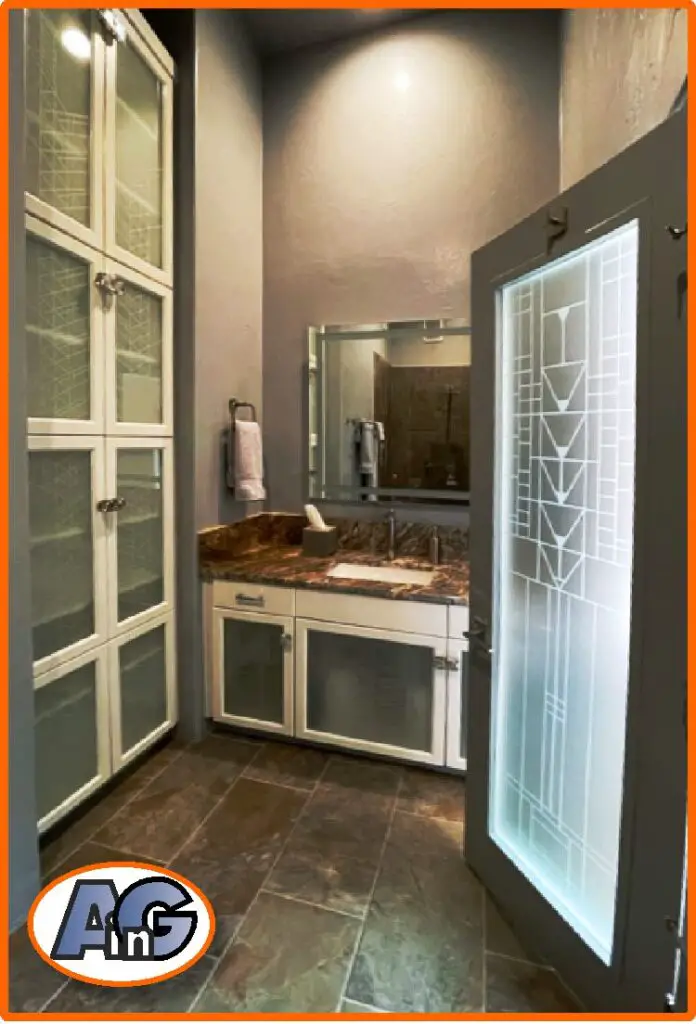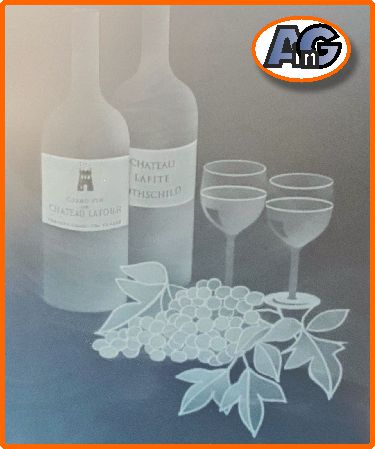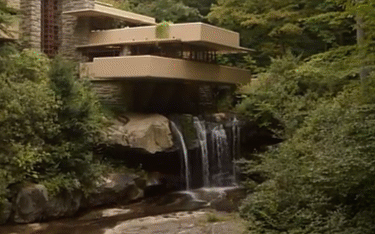Frank Lloyd Wright famously designed hundreds of stained glass windows for his Prairie-style houses in the period 1900-1923. The question is: can Frank Lloyd Wright’s designs be etched in glass?
The simplicity of Frank Lloyd Wright’s designs makes them ideal choices for etched glass. We use satin-etched (frosted) glass as a background and we etch the linear designs in the foreground.
Read on to see how Artistry in Glass adapted classic designs from the Robie House and the Darwin-Martin house (Tree of Life) for etched glass panels in the bathroom of this discriminating Tucson customer.
As an Amazon Associate, I earn from qualifying purchases

Etching secret #1 adapting the design
Frank Lloyd Wright’s designs are out of copyright so it is legal to utilize his amazing stained glass panels as inspiration. The key, however, is to respect the proportions and scale of the master when adapting drawings to fit the dimensions of your window.
For example, changing the angles of lines is highly offensive to the eye and should be avoided at all costs. See this comprehensive post to find out how Artistry in Glass designs windows in the Frank Lloyd Wright style.
The first step is to choose a Frank Lloyd Wright window that has approximately the same proportions as the customer’s panel. For this project, the Tree of Life design is ideal for a vertically elongated door panel and the Robie House designs work well for more equidimensional cabinet doors.
Etching secret #2 – choosing the glass
Sandblasting or etching of glass is essentially a black-and-white art form where frosted (etched) glass is white and the background (unetched) is dark. See this post for an explanation of the difference between sandblasting and etching.
In the case of Frank Lloyd Wright’s designs, the best technique is simply to sandblast/etch the lines (originally lead or zinc came) and leave the background unetched. However, leaving the background clear means that the background is visible. Seeing the background is undesirable because the homeowner may want to disguise an unsightly view (the contents of a cabinet for example).
Furthermore, the background tends to confuse and detract from the beauty of the designs.
The solution recommended by Artistry in Glass is to use “satin-etched” glass. This is a frosted glass created by acid etching. We achieve very elegant results by arranging the satin-etched surface on the inside and sandblasting the design on the outside as shown in this example for a wine cellar door:

The “Tree of Life” design
The “Tree of Life” is a ubiquitous motif that has been used in various cultures for centuries, It represents organic growth and the interconnectedness of all living things. In architecture, the best-known interpretations of the “Tree of Life” motif are the stained glass windows designed by Frank Lloyd Wright for the Darwin Martin House, in Buffalo, New York in 1906.
Artistry in Glass adjusted the “Tree of Life” design to the proportion of our customer’s bathroom door as shown below:

We used 1/4″ thick tempered satin-etched glass with the satin (frosted) side inside and the design etched on the outside.
A reproduction of the Tree of Life design is available in lasered hardwood from this vendor on Amazon
Cherry-veneered screen officially licensed by the Frank Lloyd Wright Foundation.
The Robie House design
Some of our customer’s favorite Frank Lloyd Wright designs are the wonderful panels made for the Frederick C. Robie house in 1908. We artfully adapted the motif to fit large and small cabinet doors as shown below.

Once again, we used satin-etched glass to provide privacy and sandblasted the artwork on the front. Notice that we maintained the angular values (shown in this modern reproduction below):
 Reproduction of a Robie house design available from Amazon.
Reproduction of a Robie house design available from Amazon.
Frank Lloyd Wright’s designs for etched glass
Artistry in Glass has been a massive fan of Frank Lloyd Wright (FLW) since John visited the architect’s masterwork – Falling Water in Pennsylvania. Students of the creative process should emulate the method used by FLW to beat “designer’s block”

Our admiration for FLW windows is based on the simple elegance of the lead lines – uncluttered by self-indulgent figurative cliches. We greatly admire simplicity and abstraction as explained in this post about why to choose abstract stained glass.
Although FLW designed his panels for leaded glass, the emphasis on strong linework makes his art highly appropriate for etched glass. See this post for details on how to design a Frank Lloyd Wright window.
Call the experts at Artistry in Glass for your Southern Arizona art glass projects.
Glass Design Resources from Artistry in Glass
- How to commission an etched glass window
- Etched or stained glass – which is the better choice?
- How to design a SW-style etched glass window
- How much does etched glass cost?
- How to order etched mirrors
- How to commission a stained glass window
- How much does stained glass cost?
- What is Dalles de Verre? Learn about faceted glass
- How to care for and clean stained glass
- How does stained glass get colored?
- A guide for designing abstract stained glass
- How to design a Frank Lloyd Wright window
- How to choose the best stained glass for your home
- How to protect religious stained glass
- Is leaded glass dangerous?

